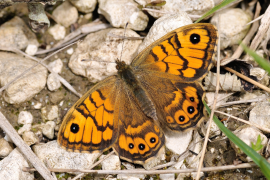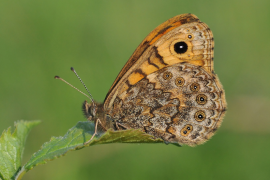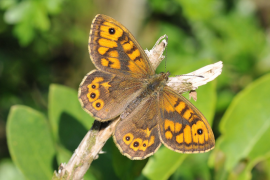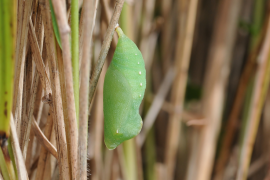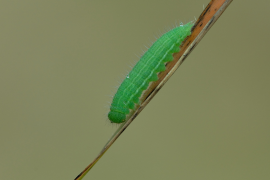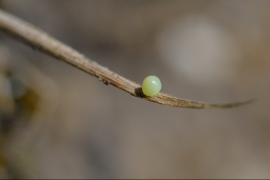by Bob Eade
This highly active species is often in the butterfly news due to the steep decline in numbers Nationally over recent years. Sussex remains one of the best Counties in the UK to still see this butterfly in reasonably good numbers, though even here the better sites are perhaps going the wrong way. In the 70s and 80s any summer downland walk would be accompanied by the Wall Brown flying along in front of you and settling on the path in front of you briefly.
This butterfly over-winters as a small larva feeding during the milder days in grass tussocks. It is an extremely slow moving larva, presumably to avoid detection from the spiders that it shares the tussocks with. As the days grow longer in late March the nearly fully grown larva becomes harder to detect and it is at this time that I believe the larva becomes nocturnal, In common with the larva of other members of the 'Brown' butterfly family. This I assume is to avoid being found by Skylarks, Meadow Pipit and other birds. I am hoping to more research on this later this year. I believe the 2nd and 3rd brood larva are both totally nocturnal as I have found them impossible to find.
The pupa is formed on grass stems, normally strong dried stems. This happens from very late March onwards. The butterfly emerges after 2-3 weeks, although I still haven't found a pupa that hasn't perished before emerging. In Sussex the 1st brood is generally on the wing from mid April until mid June with the strongest colonies along the tops of the South Downs, particularly Windover Hill, Bo Peep, High and Over, Woodingdean, Mill Hill, Steyning Rifle Range, Lancing. Numbers drop off considerably well before Arundel.
The 2nd brood is by far the largest brood with butterflies on the wing in mid July. Early to mid August is when peak numbers are flying although the flight season goes right through until early September most years.
Most years produces a 3rd brood, although this varies in size. The only regular sites are High and Over and Mill Hill, although some years there are good numbers reported from many sites. The 3rd brood normally starts in mid September, just a few days after the last 2nd brood is seen. 2016 is the first time I have seen a late 2nd brood flying with 3rd brood.



